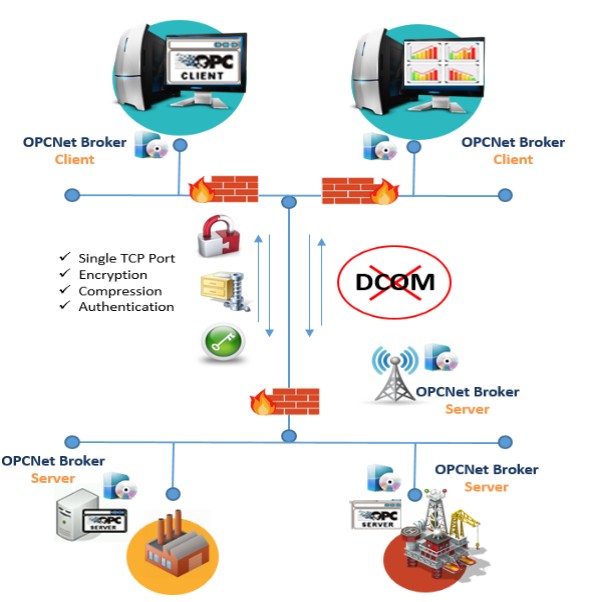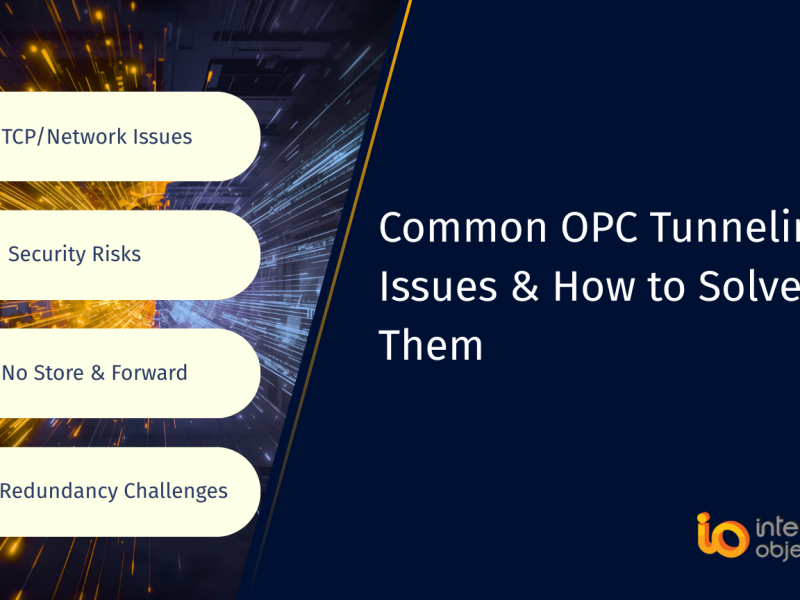What is DCOM?
DCOM stands for Distributed Component Object Model. It is a Microsoft technology used for RPC (Remote Procedure Call) systems to enable communication between COM-based applications over the network.
Why do you need DCOM for OPC Classic?
OPC DA (Data Access), A&E (Alarms & Events), and HDA (Historical Data Access) communications are based on COM and DCOM. Indeed, OPC clients and servers use COM to communicate with each other over the same machine and use DCOM for the remote communications across a network.
How to configure DCOM to enable remote OPC communications?
You can download our DCOM configuration guidelines for OPC document from here to properly to configure DCOM and enable remote communications between your OPC client and OPC Server components.
Are you looking for a solution to eliminate DCOM?
We recommend you the OPCNet Broker product, which is our OPC tunneling solution. Indeed, it allows you to securely establish remote OPC communications using a single TCP port. Click here to learn more about OPCNet Broker and how it can secure your OPC connections and data flow.

Integration Objects’ OPCNet Broker
This OPC tunnelling solution allows you to:
- Transmit data in a secure mode using data encryption, user authentication and a single TCP port
- Configure your communication schema with less complexity
- Track client/server communications and limit the number of opened ports within your firewalls to minimize security holes.
- Connect OPC components from different domains
- Define access privilege policies for OPC servers and OPC tags
- Support OPC DA, HDA and AE
- Define a white list for trusted OPC client applications
- Manage OPC servers redundancy


